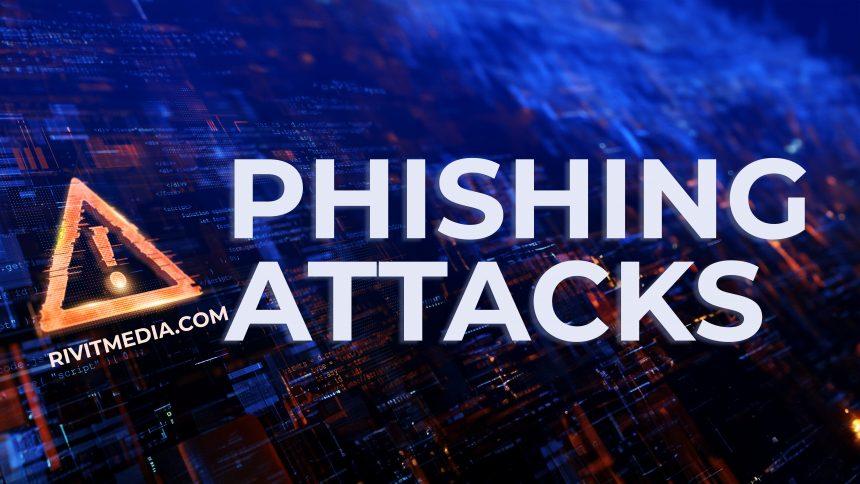Phishing scams have become increasingly sophisticated and pervasive, preying on unsuspecting individuals through deceptive emails, messages, and websites. These scams often appear legitimate, tricking users into divulging sensitive information such as passwords, credit card numbers, or other personal details. The general purpose of phishing is to either steal sensitive data for financial gain or to install malware on the victim’s system, which can lead to further exploitation.
One common form of phishing is the email scam, where attackers send out mass emails with alarming messages designed to elicit a quick response. These emails often contain threats, urging the recipient to act immediately to avoid dire consequences, such as losing access to an account or being exposed in some embarrassing situation. The scam may also encourage the recipient to click on a malicious link or download an attachment, which then infiltrates their system with malware.
Once the malware is installed, it can cause significant harm to both the system and the individual. The infected system may become slow, unresponsive, or even unusable. More concerning, however, is the risk to the individual: malware can steal personal and financial information, record keystrokes, capture screen images, and even allow the attacker to take control of the system remotely. This can lead to identity theft, financial loss, and privacy violations.
The “Malware on Porn Website” Email Scam
A recent example of this type of phishing scam is the “Malware on Porn Website” email scam. This scam attempts to exploit the recipient’s fear and embarrassment by claiming that malware was installed on their device when they visited an adult website. The email claims that the attacker has recorded the victim’s activities and threatens to release the compromising footage unless a ransom is paid.
The scam email is often sent from addresses such as “d.treichel1967@yahoo.com” and includes details like the victim’s IP address, operating system, and browser information to make the threat appear more credible. The message typically instructs the recipient to pay a ransom, usually in Bitcoin, to prevent the release of the supposed video footage. The email may also provide detailed instructions on how to make the payment, adding a sense of urgency by setting a tight deadline.
Why This Scam Works
This scam is effective because it plays on fear, guilt, and shame, emotions that can cloud judgment and lead individuals to comply with the scammer’s demands. Victims may panic and act quickly without verifying the legitimacy of the claims, especially if they have visited adult websites in the past. The threat of exposure can be powerful enough to push people into paying the ransom, even if the accusations are false.
The truth is, in most cases, the attackers do not have any actual compromising material. They rely on the victim’s fear of potential exposure to carry out their scam. By sending out these emails in large numbers, the scammers only need a small percentage of recipients to respond for the scam to be profitable.
Other Similar Threats
Phishing scams come in various forms, and the “Malware on Porn Website” scam is just one example. Other common phishing tactics include:
- Fake Account Suspensions: Emails claiming your account has been suspended and requesting you to click a link to “verify” your information.
- Lottery Scams: Notifications of winning a lottery or prize you never entered, asking for personal information or a fee to claim the prize.
- Technical Support Scams: Phone calls or emails claiming to be from tech support, warning of viruses or problems on your computer that need immediate attention.
Comprehensive Removal Guide
If you have interacted with the “Malware on Porn Website” email or suspect your system has been compromised, follow these steps to remove any associated malware and secure your system:
- Disconnect from the Internet: This will prevent the malware from communicating with its server or spreading further.
- Boot into Safe Mode:
- Restart your computer and press F8 before the Windows logo appears.
- Choose “Safe Mode with Networking” from the options.
- Use an Anti-Malware Tool:
- Download and install SpyHunter.
- Run a full system scan to detect and remove any malicious files. SpyHunter is particularly effective as it offers real-time protection and can remove stubborn malware that other tools might miss.
- Remove Temporary Files:
- Delete all temporary files to remove any leftover malware components.
- Open the “Run” dialog (Windows + R), type “temp”, and press Enter. Delete all files in the folder that opens.
- Check for Suspicious Programs:
- Go to “Control Panel” > “Programs” > “Uninstall a program.”
- Look for any unfamiliar or recently installed programs and remove them.
- Reset Web Browsers:
- Reset all your browsers to default settings to remove any browser hijackers or malicious extensions.
- In Chrome, go to “Settings” > “Advanced” > “Reset settings.”
- In Firefox, go to “Help” > “Troubleshooting Information” > “Refresh Firefox.”
- Change Your Passwords:
- If you suspect your passwords were compromised, change them immediately from a secure device.
- Use strong, unique passwords for each account.
- Monitor Financial and Personal Information:
- Keep an eye on your bank statements and credit reports for any unauthorized activity.
- Consider using identity theft protection services.
Preventing Future Scams
To avoid falling victim to similar scams in the future, take the following precautions:
- Be Skeptical: Always be wary of unsolicited emails, especially those that create a sense of urgency or fear.
- Verify Sources: If you receive a suspicious email, verify its legitimacy by contacting the supposed sender through official channels.
- Do Not Click Links or Download Attachments: Avoid clicking on links or downloading attachments from unknown or suspicious emails.
- Use Strong Security Software: Install and regularly update anti-malware software like SpyHunter to protect your system from threats.
- Educate Yourself and Others: Stay informed about common phishing tactics and share your knowledge with others to help prevent further attacks.
By following these steps, you can remove malware from your system and protect yourself from future phishing scams.





